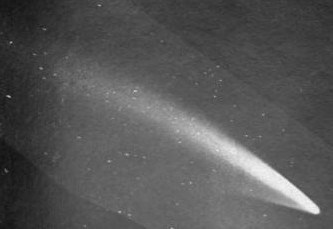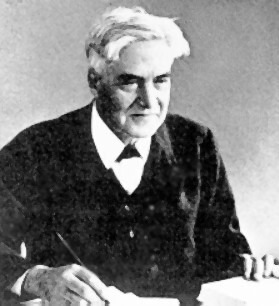Comets have always interested astronomers due to their unique characteristics, orbital patterns, and their odd appearances in our solar system. Many of the comets have passed our solar system once and will never return or return after thousands of years. Despite not returning in a long while, they are still one of the most intriguing phenomena Earth has ever witnessed for many reasons. The Great January Comet of 1910 is known to have been the brightest comet in the 20th century.
Overview of The Great January Comet of 1910
As the name suggests, The Great January Comet of 1910 was a comet that was visible in early January 1910 and was independently spotted by many people at the same time. For this reason, there is no specific discoverer for this comet and it was named The Great January Comet of 1910 as opposed to the traditional naming after the discovery. However, the first person to study this comet in great detail was Robert T. A. Innes, a Scottish Astronomer. The Great Comet of 1910 is also referred to as the “Daylight Comet” as it was brightly visible during the Daytime as well.
One of the main reasons why it became quite popular in the astronomical community is because it shone brighter than the planet “Venus”. The official name of this comet is C/1910 A1 while the alternative names include 1910 l and 1910a. The observation arc for this comet was 82 days from its initial visibility on 9th January 1910. The perihelion distance of this comet was 0.12896 Astronomical Units which is equivalent to 19.292 million km. It reached the perihelion on 17th January 1910.
Timeline of The Great January Comet of 1910
The Great January Comet of 1910 was discovered unexpectedly. It actually came to solar conjunction with 1 degree from the sun on 17th December 1909. This means that the sun was between Earth and The Great January Comet of 1910. At this point, the distance between the comet and the sun was 1 Astronomical Unit. The comet was not apparent at this time because it was in Solar Conjunction.
By January, as the comet moves around its orbit, the sun was no longer between the Earth and the comet which is why it was visible all of a sudden. A bright object was suddenly seen in the sky which occurred because the sun was no longer obstructing the view. In the early days of January, many people spotted it simultaneously as it was a sudden bright appearing object in space. However, it is said that a few diamond miners were the first ones to observe the comet right before the time of dawn. By this time, very few people were awake and only these diamond miners have a known record of who first spotted this comet.
The comet was prominently visible on 12th January 1910 at the time when diamond miners saw it in the Southern Hemisphere. The apparent magnitude of The Great January Comet of 1910 was -1 with a declination of -29. It was one of the most interesting events in space exploration.
By 17th January 1910, the comet reached the perihelion and was clearly visible in the daylight. At this time, the magnitude was -5 due to the light being scattered in a forward pattern. The comet was shining very brightly at this time and could be observed by many without any telescope as well. The perihelion distance was 0.12896 Astronomical Units. By 18th January 1910, the comet was again at the solar conjunction point.
Following this time, the comet started to decrease in brightness because it was getting away from the perihelion on the return orbit. Now, the comet was observable from the Northern Hemisphere in the evening. At this time, the tail of this comet reached up to 50 degrees by early February.
At the end of February as well as the start of March 1910, the comet started to fade away and lose its brightness. It eventually faded completely and could no longer be seen.
The Confusion With Halley’s Comet
One of the most interesting phenomenons which confused many astronomers for a few months was the appearance of Comet Halley. In 1910, the arrival of Comet Halley was already predicted so when The Great January Comet of 1910 was first spotted, it was mistaken by many as Comet Halley. However, soon after studying the pattern, orbit, brightness, and various other factors of the comet, it was deduced that this comet is not Halley’s Comet rather it is a different celestial object that has never been seen before.
The confusion was further cleared when Comet Halley made its appearance in April 1910, four months after the “Daylight Comet” appeared. Another major error made in the case of The Great January Comet of 1910 was the wrong name that was given to it. The comet was initially named “Drake’s Comet”. However, this only occurred because of a telephonic error. Upon the realization by astronomical organizations that this comet was simultaneously seen by many people at the same time, the comet was renamed “The Great January Comet of 1910”.
Chaos with The Great January Comet of 1910
Some sources suggest that this comet was so bright that the people who saw it were terrified and felt that there was a massive disaster approaching Earth. Others believed that the world was coming to an end. As many newspapers were reporting the appearance of the comet, the entire phenomenon became a surprising mystery and invoked fear among the readers. In Korea, the myth of the comet hitting the Earth and killing everyone grew so much that people stopped going to work and just stayed at home waiting for the world to end.
Who was Robert T. A. Innes?
While there is no clue as to who saw The Great January Comet of 1910, Robert T. A. Innes was the first person to study the comet in detail and evaluate more information on it. Robert Innes was a Scottish Astronomer who was born on 10th November 1861 and died on 13 March 1933. His most notable contribution to astronomy is the discovery of the Proxima Centauri star in 1915 as well as different types of binary stars as well. Innes also founded a meteorological observatory in Johannesburg. His legacy still remains of significance in the field of astronomy.
Conclusion
Since the orbital distance of The Great January Comet of 1910 is estimated to be 9200 years, none of the people here on Earth would ever be seeing it again. However, being known as possibly the brightest comet of the 20th century, this comet remains of high significance in the field of astronomy. There are plenty of other comets in our solar system of high significance.



